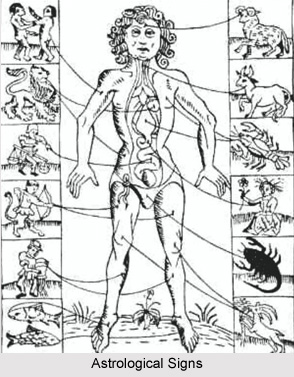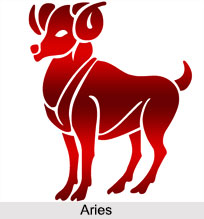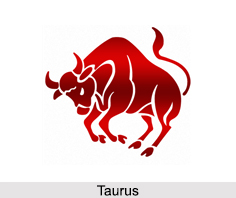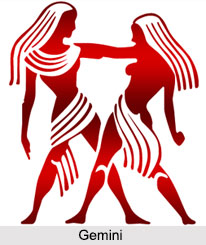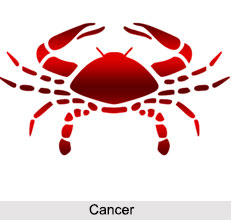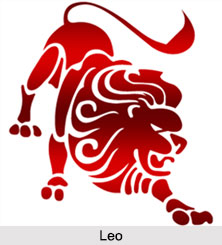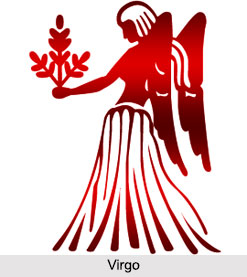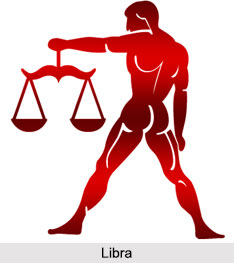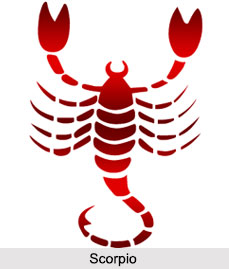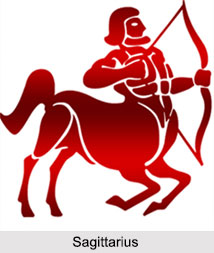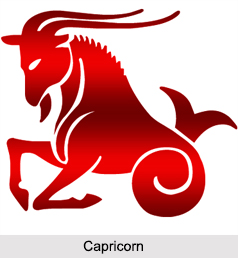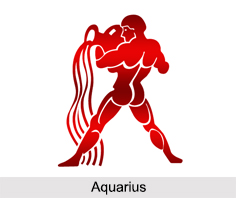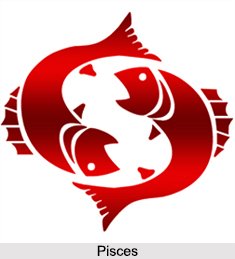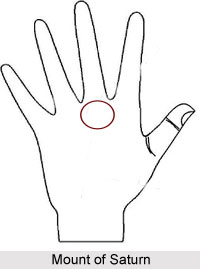 The mount of Saturn is situated at the root of the finger of Saturn. The Mount of s Saturn is considered of enough importance in the science of palmistry. The Mount of Saturn is the indicator of the extra ordinary forces; hence the development of this mount on the palm is indicative of extra-ordinary tendencies in the respective individual. A careful study of the Mount of Saturn will lead to the detection of all the extraordinary tendencies in a person. The study of the Mount of Saturn is very complicated and the palmists have to consider the minute details while studying the mount. If this mount is absent in the palm of a person then he will not be able to get special success or respect in life.
The mount of Saturn is situated at the root of the finger of Saturn. The Mount of s Saturn is considered of enough importance in the science of palmistry. The Mount of Saturn is the indicator of the extra ordinary forces; hence the development of this mount on the palm is indicative of extra-ordinary tendencies in the respective individual. A careful study of the Mount of Saturn will lead to the detection of all the extraordinary tendencies in a person. The study of the Mount of Saturn is very complicated and the palmists have to consider the minute details while studying the mount. If this mount is absent in the palm of a person then he will not be able to get special success or respect in life.
The finger of Saturn is called the deity of good-luck because the fate line ends at the base of this finger. If the mount of Saturn is fully developed then the person is highly fortunate and rises very high in life with his own efforts, according to the science of palmistry. Persons with developed mounts in Saturn, generally keeps himself aloof from the worldly matters. Their sole aim is to reach their goal. Hence they constantly make effort to move forward towards their goal. He always remains engrossed deeply in his work. As a result they hardly care about the family and the other household activities. By nature they are generally irritating and suspicious. With the advance in age, they become more mysterious. Persons with prominent mount of Saturn are wizards. They make extraordinary success in the fields like engineering, science, literature and chemistry. They are found to have developed a sound career graph. Such persons are thrifty in their lives and believe in having more immovable property. Hence they work hard fors the increase of their property. They are not called as the connoisseurs of arts. As a result they have less inclination towards music and dancing. They are suspicious by nature from their early childhood and look with suspicion on their own sons and wives.
Sometimes the mount of Saturn is found to be very much developed then the person is prone to commit suicide in his life. It is said in the science of palmistry that this mount is very prominent in the hands of dacoits, cheats and robbers. The mount of such persons is generally yellowish or pale. Their palm and skin are pale compares to the other individuals. Irritability, which is the chief feature of their character, is clearly seen in their nature.
If the mount of Saturn is leaning towards the mount of Jupiter then it represents a different feature. Such inclination, according to the palmist gives suspicious indications. Such persons get respectable place in society and are held in high esteem in the society. If the mount of Saturn is leaning towards the mount of Sun then such persons are lazy, poor. Such person also has the tendency to be dependent upon fate. They suffer from frustration and they see the gloomy picture in every work. They are not able to get any help from relatives and often sustain loss in business.
Again if there are more than necessary lines on the mount of Saturn then such a person are found to be coward and very licentious. If the mount of Saturn and the mount of Mercury both are developed, then such a person becomes a successful physician or a businessman. People with such finger never lack money throughout their life.
Again if the mount of Saturn is missing in the palm, then according to palmistry, it can be said that such a person`s life has no importance. If this mount is protruded ordinarily, then the person has more than necessary faith in fate-and does not succeed in his plans. Such persons have very few friends; they are obstinate by nature and are non-religious. On the contrary if the tip of the finger of Saturn is pointed and the mount of Saturn is prominent, the person will be an imaginative one. But if the tip of the finger is squares, the person makes spectacular progress in the field of agriculture or chemistry.
Thus the mount of Saturn is important enough to find out the extraordinary tendency in the individual.
More on Plamistry
See Also
 The mount of Saturn is situated at the root of the finger of Saturn. The Mount of s Saturn is considered of enough importance in the science of palmistry. The Mount of Saturn is the indicator of the extra ordinary forces; hence the development of this mount on the palm is indicative of extra-ordinary tendencies in the respective individual. A careful study of the Mount of Saturn will lead to the detection of all the extraordinary tendencies in a person. The study of the Mount of Saturn is very complicated and the palmists have to consider the minute details while studying the mount. If this mount is absent in the palm of a person then he will not be able to get special success or respect in life.
The mount of Saturn is situated at the root of the finger of Saturn. The Mount of s Saturn is considered of enough importance in the science of palmistry. The Mount of Saturn is the indicator of the extra ordinary forces; hence the development of this mount on the palm is indicative of extra-ordinary tendencies in the respective individual. A careful study of the Mount of Saturn will lead to the detection of all the extraordinary tendencies in a person. The study of the Mount of Saturn is very complicated and the palmists have to consider the minute details while studying the mount. If this mount is absent in the palm of a person then he will not be able to get special success or respect in life.
